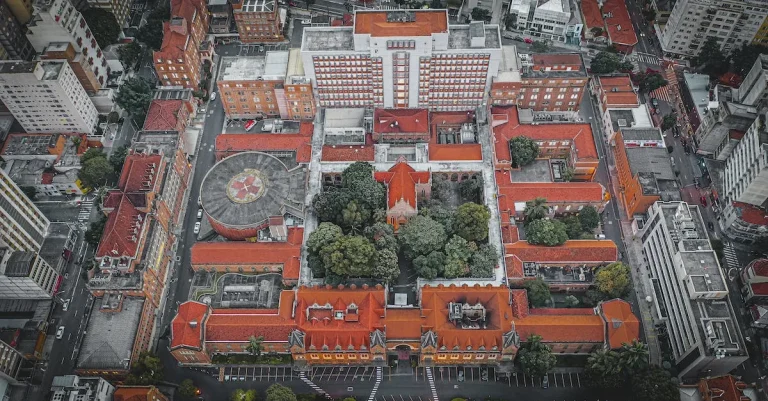Is New York Expensive To Live In? A Close Look At The Cost Of Living
With its towering skyscrapers, bustling streets, and endless entertainment options, New York City lures people from all over the world. But its reputation as one of the most expensive cities in America gives many prospective residents pause.
If you’re short on time, here’s a quick answer: Yes, New York City has a very high cost of living compared to the US average and most other major cities. Housing, groceries, transportation, and other expenses tend to run far above national averages.
In this comprehensive guide, we’ll break down the cost of living in New York City across major categories like housing, food, transportation, and more. We’ll also look at how New York compares to other major US cities. Read on for a detailed analysis of what to expect when living in the Big Apple.
With careful planning and budgeting, living affordably in New York is possible, though expect your paycheck to be stretched thinner than in other parts of the country.
Housing Costs
Rental prices
When it comes to housing costs in New York, rental prices are a significant factor to consider. The city is known for its high cost of living, and this is reflected in the rental market. Depending on the neighborhood and the size of the apartment, rental prices can vary greatly.
In popular areas such as Manhattan and Brooklyn, the average rent for a one-bedroom apartment can range from $2,500 to $4,000 per month. However, it’s worth noting that there are also more affordable options available in the outer boroughs and less trendy neighborhoods.
Home prices
Buying a home in New York can be a substantial investment. Home prices in the city tend to be higher than the national average. According to recent data, the median home price in New York City is around $700,000.
However, this figure can vary significantly depending on the neighborhood and the size of the property. In Manhattan, for example, the median home price is closer to $1.7 million, while in more affordable areas like the Bronx, it can be around $400,000.
It’s important to consider these prices when deciding whether to rent or buy in the city.
Factors impacting housing costs
There are several factors that contribute to the high housing costs in New York. One of the main factors is the high demand for housing in a city with limited space. The population density in New York City is among the highest in the country, which drives up the cost of both rental and home prices.
Additionally, the city’s desirable amenities, cultural attractions, and job opportunities also contribute to the high cost of living. Another factor is the cost of construction and maintenance, which can be higher in a densely populated urban environment.
Finally, the overall cost of living in New York, including transportation, groceries, and entertainment, can also impact housing costs.
Cost of Food and Groceries
Grocery prices
When it comes to buying groceries in New York, it’s no secret that prices can be higher compared to other cities. The cost of living in New York City, in particular, contributes to the higher price tags on food items.
However, it’s important to note that grocery prices can vary depending on the neighborhood you live in and the store you choose to shop at.
According to a study conducted by the Bureau of Labor Statistics, the average American spends around 13% of their income on food. In New York, this percentage might be slightly higher due to the higher cost of living.
However, it’s also worth mentioning that New York offers a wide range of grocery stores, including budget-friendly options like Aldi, Trader Joe’s, and Costco, where residents can find affordable food options.
Dining out costs
New York City is renowned for its diverse culinary scene, offering a plethora of dining options for every taste and budget. However, dining out in the city can be pricey, especially at high-end restaurants or trendy establishments.
It’s not uncommon to find entrees priced at $30 or more at upscale restaurants.
For those looking for more budget-friendly options, New York also offers a wide range of affordable eateries, food trucks, and street vendors. These options often provide delicious meals at a fraction of the price compared to upscale restaurants.
Additionally, exploring different neighborhoods can lead to hidden gems with affordable yet delectable food options.
It’s important to note that while dining out can be expensive, many New Yorkers have found ways to enjoy the city’s culinary delights without breaking the bank. Taking advantage of happy hours, lunch specials, or exploring lesser-known restaurants can be great ways to experience the city’s food scene without spending a fortune.
Transportation Expenses
Public transportation
New York City is known for its extensive public transportation system, which includes buses, subways, and trains. The Metropolitan Transportation Authority (MTA) operates the subway and bus system, making it easy for residents to get around the city.
The cost of a single subway or bus ride is reasonable, with a current fare of $2.75. However, frequent travelers may want to consider purchasing a MetroCard, which offers discounted fares and unlimited rides for a certain period of time.
Taxis and rideshares
Taxis and rideshares are also popular modes of transportation in New York City. Yellow taxis can be hailed on the street or found at designated taxi stands throughout the city. Rideshare services like Uber and Lyft are also widely available.
While convenient, these options can be more expensive compared to public transportation. However, they provide a door-to-door service and can be a convenient option, especially when traveling with a group or carrying heavy luggage.
Gasoline
For those who own a car or rent one, the cost of gasoline in New York City can vary. As of the latest data, the average price of gasoline in New York City is around $2.80 per gallon. It’s worth noting that there are additional expenses to consider, such as parking fees and tolls.
Parking
Parking in New York City can be a challenge, especially in busy areas like Manhattan. Street parking is limited and often requires payment at parking meters. Alternatively, there are parking garages available throughout the city, but these can be quite expensive.
The average cost for daily parking in Manhattan is around $40-$60. Residents may also consider monthly parking options, which can range from $300 to $600, depending on the location.
It’s important to budget for transportation expenses when living in New York City, as they can significantly impact the cost of living. However, with the variety of transportation options available, residents have the flexibility to choose the most convenient and cost-effective mode of transportation based on their needs.
Healthcare, Taxes, and Utilities
When considering the cost of living in New York, it’s important to take into account factors such as healthcare, taxes, and utilities. These expenses can have a significant impact on an individual’s or a family’s budget.
Health insurance premiums
New York is known for having some of the highest healthcare costs in the United States. Health insurance premiums can be a significant expense for residents. It’s important to carefully research and compare different healthcare plans to find one that suits your needs and budget.
Additionally, individuals may be eligible for government subsidies to help offset the cost of premiums. Websites like Healthcare.gov provide valuable information and resources for finding affordable healthcare options.
New York taxes
New York has a reputation for high taxes, particularly in areas like income tax and property tax. The state income tax rates range from 4% to 8.82%, depending on income level. Additionally, property taxes can vary significantly based on location and property value.
It’s important to factor in these taxes when considering the cost of living in New York. Websites like New York State Department of Taxation and Finance provide detailed information on tax rates and deductions.
Internet, electricity, etc.
Utilities such as internet, electricity, and water are essential for daily life. The cost of these utilities can vary depending on the size of your residence and your usage. In New York, internet service providers offer a range of plans with different speeds and prices.
It’s advisable to compare providers and plans to find the most suitable and cost-effective option for your needs. Similarly, electricity costs can vary depending on factors such as the size of your home and energy usage habits.
Websites like New York State Public Service Commission provide information on utility rates and consumer rights.
When considering the cost of living in New York, it’s important to carefully evaluate healthcare expenses, taxes, and utilities. These factors can significantly impact your monthly budget and overall financial well-being.
By researching and comparing options, you can make informed decisions that align with your financial goals and needs.
New York Cost of Living vs. Other Major US Cities
Comparison to other Northeast cities
When it comes to the cost of living, New York City often takes the top spot as one of the most expensive cities in the United States. However, comparing New York’s cost of living to other major cities in the Northeast reveals interesting insights.
Cities like Boston, Philadelphia, and Washington D.C. also have high living costs, but they are typically slightly lower than New York’s. The cost of housing, groceries, and transportation in these cities are comparable, but New York’s sky-high rents and property prices contribute to its reputation as an expensive place to live.
According to a study conducted by Numbeo, an online database of user-contributed data, the cost of living index in New York City is 189.62, while Boston has a slightly lower index of 169.72, Philadelphia has 159.63, and Washington D.C. has 175.15.
These numbers indicate that New York is indeed more expensive, but the difference may not be as significant as one might expect.
vs. West Coast and Southern cities
When comparing the cost of living in New York City to cities on the West Coast and in the Southern United States, the differences become more pronounced. Cities like San Francisco, Los Angeles, and Seattle are known for their high living costs.
The cost of housing in San Francisco, for example, is notoriously steep, with the average rent for a one-bedroom apartment exceeding $3,000 per month.
On the other hand, cities in the South tend to have a lower cost of living compared to New York City. Atlanta, Dallas, and Miami offer a more affordable lifestyle, with lower housing costs and a generally lower cost of goods and services.
For instance, the cost of housing in Atlanta is significantly lower than in New York, with the average rent for a one-bedroom apartment being around $1,200 per month.
However, it’s important to note that while the cost of living may be lower in these cities, the salaries may also be lower. New York City offers numerous high-paying job opportunities in various industries, which can offset the higher cost of living for some individuals.
Ultimately, whether New York City is considered expensive to live in or not depends on individual circumstances and personal preferences. While the cost of living may be higher compared to other cities, New York offers a unique and vibrant lifestyle that many find worth the extra expense.
Conclusion
New York City is undoubtedly one of the most expensive places to live in the United States. While it offers world-class entertainment, dining, culture, and job opportunities, those benefits come at a high price.
By carefully managing your budget and lifestyle, living affordably is possible. But New Yorkers must contend with housing prices, taxes, transportation costs, and other expenses exceeding most other parts of the country.








